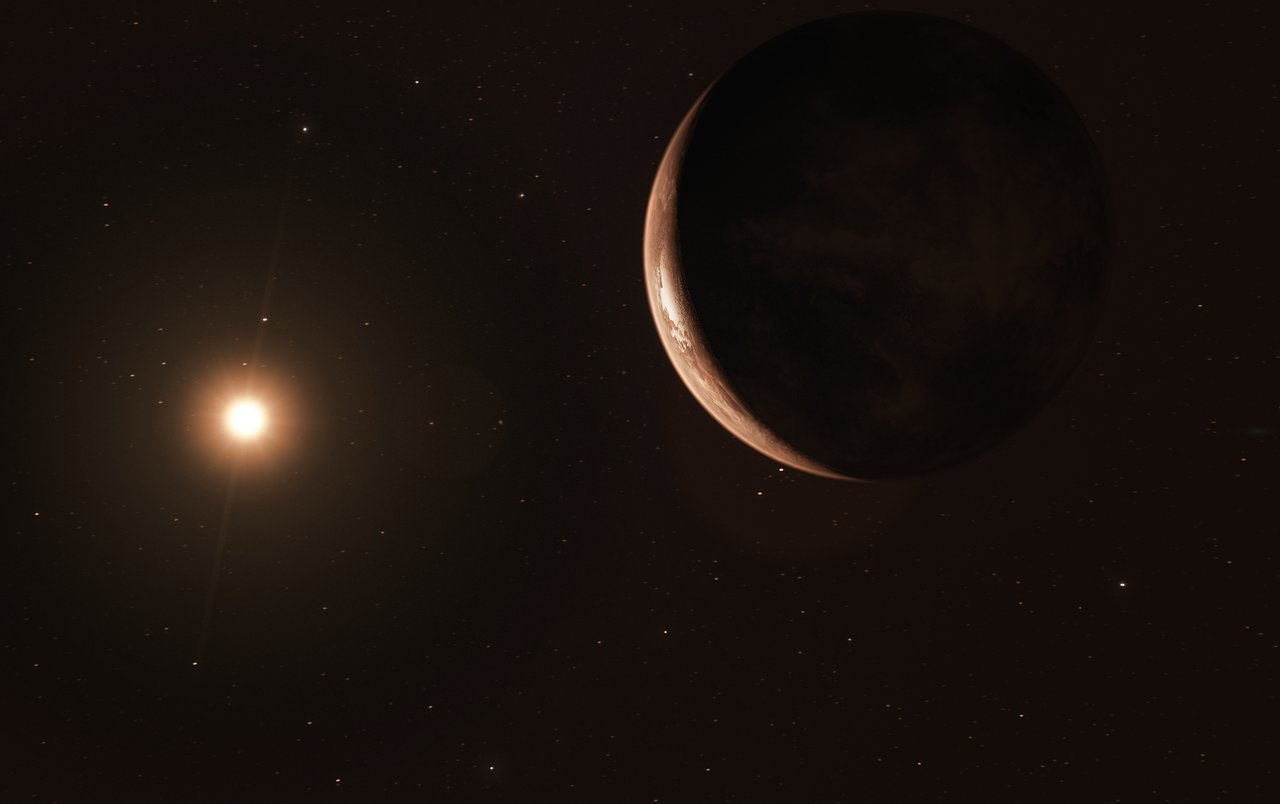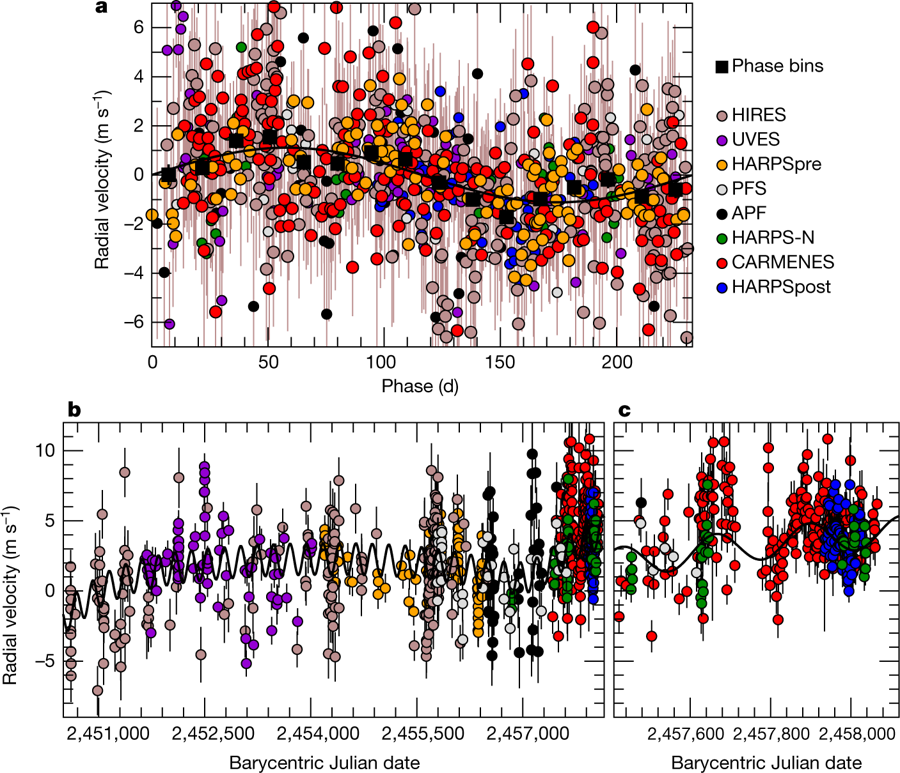HARPS-N contributes to discover a super-Earth orbiting Barnard's Star
One of the largest observing campaigns to date using data from a world-wide array of telescopes combined with several high-precision instruments, including the TNG planet-hunting HARPS-N (High Accuracy Radial velocity Planet Searcher in North hemisphere), have revealed an exo-planet orbiting the Barnard's Star. It is a red dwarf, a cool, low-mass star, the second one nearest to the Earth after Proxima Centauri (about 6 light-years away).
Differently than Proxima, Barnard's Star is single. While the star has probably twice the age of our Sun and it is relatively inactive, it also has the fastest apparent motion of any star in the night sky.
Data indicate that the planet could be a super-Earth having a mass at least 3.2 times that of the Earth, which orbits its host star in roughly 233 days.
Barnard's Star only dimly illuminates the exo-planet: light from Barnard's Star provides its planet with only 2% of the energy the Earth receives from the Sun.
Despite being relatively close to its parent star, at a distance only 0.4 times that between Earth and the Sun, the exoplanet lies close to the 'snow line', the region where volatile compounds such as water can condense into solid ice. Practically this new exo-planet could have a temperature of −170 °C, making it inhospitable for life as we know it.
Super-Earths are the most common type of planet to form around low-mass stars such as Barnard's Star, lending credibility to this newly discovered planetary candidate. Furthermore, current theories of planetary formation predict that the snow line is the ideal location for such planets to form.
Doppler effect was used to find the exo-planet candidate: while the planet orbits the star, its gravitational pull causes the star to wobble. When the star moves away from the Earth, its spectrum is redshifted; that is, it moves towards longer wavelengths. Similarly, starlight is shifted towards shorter, bluer, wavelengths when the star moves towards Earth.
Astronomers take advantage of this effect to measure the changes in a star's velocity due to an orbiting exo-planet. HARPS-N can detect changes in the star's velocity as small as 1 m/s, about walking pace. The radial velocities have never been used to detect a similar super-Earth type exo-planet in such a large orbit around its star.
This breakthrough, announced in a paper published in the journal Nature, is a result of the Red Dots and Carmenes projects, aimed at searching for local rocky planets. The Telescopio Nazionale Galileo is very proud to have contributed to this important discovery by keeping HARPS-N at the very high-level standards requested by these frontier researches.

Fig. 1: Artist's impression of the exoplanet Barnard b viewed from space. Credit: ESO/M. Kornmesser

Fig. 2: a. Phase-folded representation of the best-fitting 233-day circular orbit (black line) to the different datasets. b, c, Time series of the radial-velocity observations with the fitted model superimposed (b) and a close-up of the time region around the CARMENES observations (c). More information at: https://www.nature.com/articles/s41586-018-0677-y
Useful links:

